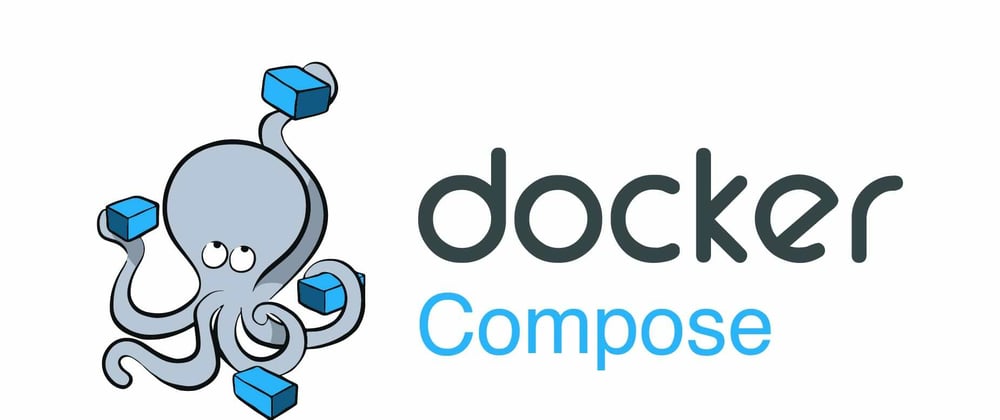In the previous step, we initialized the Django application using the docker image.
In this part, we will be creating the docker-compose.yml file and define the required services to run the application.
TOC
- Create directories
- Create
docker-compose.yml - Define database (MySQL) service
- Define adminer server (Database management)
- Define app service
- Run docker-compose
Let's start
1. Create directories
Create two directories at the root of the project, src and static_my_project in the host where source code of the Django application will reside in the src directory and the static files in the static_my_project directory.
The directory structure will look like
- /
| - scripts
| - src
| - static_my_project
| - docker-compose.yml
| - Dockerfile
| - requirements.txt
2. Create dokcer-compose.yml
Create the docker-compose.yml file in the host with the content
version: '3.7'
3. Define database service
Let's define a database service that will be consumed by the Django application.
Add the following to the docker-compose.yml
services:
database:
image: mysql:8.0
container_name: app__database
command: --default-authentication-plugin=mysql_native_password
restart: always
volumes:
- app_db:/var/lib/mysql
environment:
- MYSQL_ROOT_PASSWORD=app_db
- MYSQL_DATABASE=app_db
- MYSQL_USER=app_db
- MYSQL_PASSWORD=app_db
ports:
- 3306:3306
volumes:
app_db:
- We are using
mysqlversion8.0image for the database. - We have also defined a docker volume to store database files inside
app_db. - The database will be running on port
3306.
4. Define adminer server (optional)
Adminer is a web-based database management service. Using this service we can directly access the database in the browser.
Add the following content to the docker-compose.yml file
services:
adminer:
image: adminer:latest
restart: always
ports:
- 8080:8080
The adminer services will be running on port 8080.
5. Define app service
Let's create an application service. We will use the Dockerfile to build the image.
Add the following content to the docker-compose.yml
services:
app:
build:
context: .
dockerfile: Dockerfile
container_name: app_image
command: ["/scripts/docker/wait_for_it.sh", "database:3306", "--", "/scripts/docker/docker_start.sh"]
depends_on:
- database
ports:
- 8000:8000
volumes:
- ./requirements.txt:/app/requirements.txt
- ./static_my_project:/static_my_project
- ./src:/app
- The application will be build using the
Dockerfilewe created in step 1 - When running, the application container will be named
app_image - Django by default runs on port 8000, we have mapped the port 8000 of the host to the container so that the server can be accessed from the host browser.
- We have mapped the following host volumes to the container files/folder.
-
requirements.txt-- Any modification to the requirements.txt file in the container will be updated to the host requirements.txt file - The
static_my_projectdirectory of the host will be mapped to thestatic_my_projectdirectory in the container. - The
/appdirectory is mapped to the./srcdirectory in the container. Any changes to the host./srcor container/appdirectory will be synced.
-
The contents of the docker-compose.yml
version: '3.7'
services:
app:
build:
context: .
dockerfile: Dockerfile
container_name: app_image
command: ["/scripts/docker/wait_for_it.sh", "database:3306", "--", "/scripts/docker/docker_start.sh"]
depends_on:
- database
ports:
- 8000:8000
volumes:
- ./requirements.txt:/app/requirements.txt
- ./static_my_project:/static_my_project
- ./src:/app
database:
image: mysql:8.0
container_name: app__database
command: --default-authentication-plugin=mysql_native_password
restart: always
volumes:
- app_db:/var/lib/mysql
environment:
- MYSQL_ROOT_PASSWORD=app_db
- MYSQL_DATABASE=app_db
- MYSQL_USER=app_db
- MYSQL_PASSWORD=app_db
ports:
- 3306:3306
adminer:
image: adminer:latest
restart: always
ports:
- 8080:8080
volumes:
app_db:
6. Run docker-compose
To run the defined services inside the docker-compose.yml file, let's run the services by executing
docker-compose up --build
It will build the application image and run the services.
Let's verify first if database and adminer services are running. Open the following link in the browser
http://localhost:8080
If the adminer login page appears, enter the following details
- Server: database
- Username: app_db
- Password: app_db
- Database: app_db
If the login works, the database and the adminer services are successfully running.







Top comments (0)